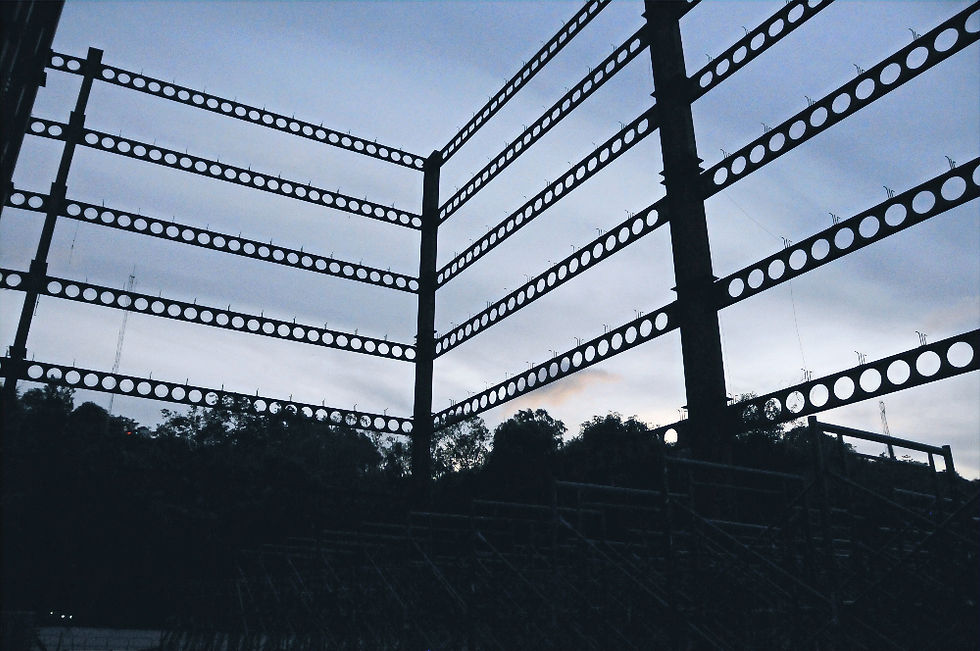Steel Beam vs Timber Beam: Which Is Best for Your Extension?
- Steel Beam Installers

- Jul 10
- 4 min read
When planning a house extension in the UK, choosing the right beam is critical to ensure structural integrity, safety and long-term performance. The two most common options are steel beams and timber beams, but which one is the right choice for your project?
In this guide, we’ll break down the key factors to help you decide, including:
Typical structural applications in UK extensions
Pros and cons of rolled steel joists (RSJs) and timber
Cost comparisons
Load bearing considerations
Building regulations in England

What Is the Purpose of a Beam in an Extension?
A beam is a horizontal structural element used to provide structural support across open spaces.
In extensions, beams are typically required to:
Support load bearing walls being removed
Carry loads from floors, walls, or roofs above
Enable open-plan designs with wide door or window openings
The load distribution, span length and load type determine the appropriate material and beam size.
Steel Beams for Extensions
Steel beams, often referred to as RSJ beams, universal beams (UBs), or h beams, are the most popular choice for structural support in domestic extensions across the UK.
Advantages of Steel Beams
✅ Exceptional high strength and high load bearing capacity
✅ Ideal for longer spans and wide openings
✅ Manufactured to precise dimensions and can be custom cut
✅ Compatible with universal columns for more complex structures
✅ Consistent durability, even in demanding environments
✅ Can be fire-protected with materials like intumescent paint
✅ Suitable for heavy structural applications
Modern structural steel products offer an extensive selection of beam sizes to suit nearly any construction scenario, especially where load bearing (wall removal) is significant.
Disadvantages of Steel Beams
❌ Heavier weight, which may require lifting equipment or crane hire
❌ Requires boxing-in or cladding to meet fire regulations
❌ Typically needs a structural engineer to specify size and support
❌ May have slightly longer delivery lead times compared to timber
Steel is rarely a DIY material. Due to its high load bearing capacity, it's essential to work with professionals who can provide expert advice on beam sizing and installation.
Timber Beams for Extensions
Timber beams are a more traditional option and can be an attractive alternative in some smaller extensions or aesthetic-focused builds. Structural timber is often used in the form of solid wood (like Douglas Fir) or engineered products such as glulam.
Advantages of Timber Beams
✅ Lightweight design allows easier handling and installation
✅ Naturally renewable material, often with faster delivery
✅ Lower upfront cost in some cases
✅ Can provide a natural look when left exposed
✅ Suitable for smaller openings or decorative structural support
Disadvantages of Timber Beams
❌ Limited load bearing capacity vs steel
❌ Prone to moisture, insect damage or warping if not treated
❌ Larger width and length may be required to match the strength of a steel alternative
❌ Less effective for longer spans or where major walls are being removed
Cost Comparison in the UK
When it comes to cost, timber beams are generally cheaper to source than steel beams, especially for smaller spans or simpler projects. However, the choice isn’t just about material price, it also involves design requirements and installation complexity.
Steel beams, such as RSJs and universal beams, tend to cost more overall because of:
✅ Higher material costs for high strength structural steel
✅ Specialist fabrication (e.g. custom cut to size)
✅ Additional installation requirements, including lifting equipment or temporary propping
✅ Fire protection measures like boxing-in or intumescent paint
Despite the higher upfront cost, steel is often the more suitable and efficient choice for projects involving longer spans, significant load bearing, or when removing load bearing walls. Its high load bearing capacity and durability make it a long-term investment in the safety and value of your home.
Building Regulations and Safety in England
Under Part A of the Building Regulations, any structural modification, whether using structural steel or timber, requires approval from Building Control.
Some important points:
✅ You’ll need a structural engineer to carry out calculations for the beam
✅ RSJ beams and universal beams must be fire-protected (e.g. plasterboard or intumescent paint)
✅ Structural elements must be installed safely and signed off by Building Control
✅ Even when not visible, beams are crucial to maintaining structural integrity
When to Choose Steel vs Timber
Here are some practical guidelines:
Choose steel beams if:
You’re removing a major load bearing wall
The span exceeds 3–4 metres
You require a slim profile with maximum strength
You want a permanent, fire-resistant solution
You need to comply with structural engineer calculations for significant load distribution
Choose timber beams if:
Loads are light and spans are modest
You're working on an outbuilding or decorative feature
You want a more natural look and lightweight design
You're seeking a lower-cost or DIY-friendly option
A structural engineer confirms timber is suitable for your specific needs
Conclusion
The choice between steel and timber beams depends on several factors, including project size, budget, span, appearance, and structural demands. While timber beams may suit some small-scale builds or aesthetic goals, steel beams, especially RSJs, universal beams, or h beams, are the preferred choice for strength, safety, and long-term performance.
At Steel Beam Installers, we supply and install high quality steel beams across England. Whether you’re planning to remove a load bearing wall, build an extension, or need expert advice on beam sizing, our experienced team can help.
👉 Contact us today to discuss your extension and receive a quote.




Comments